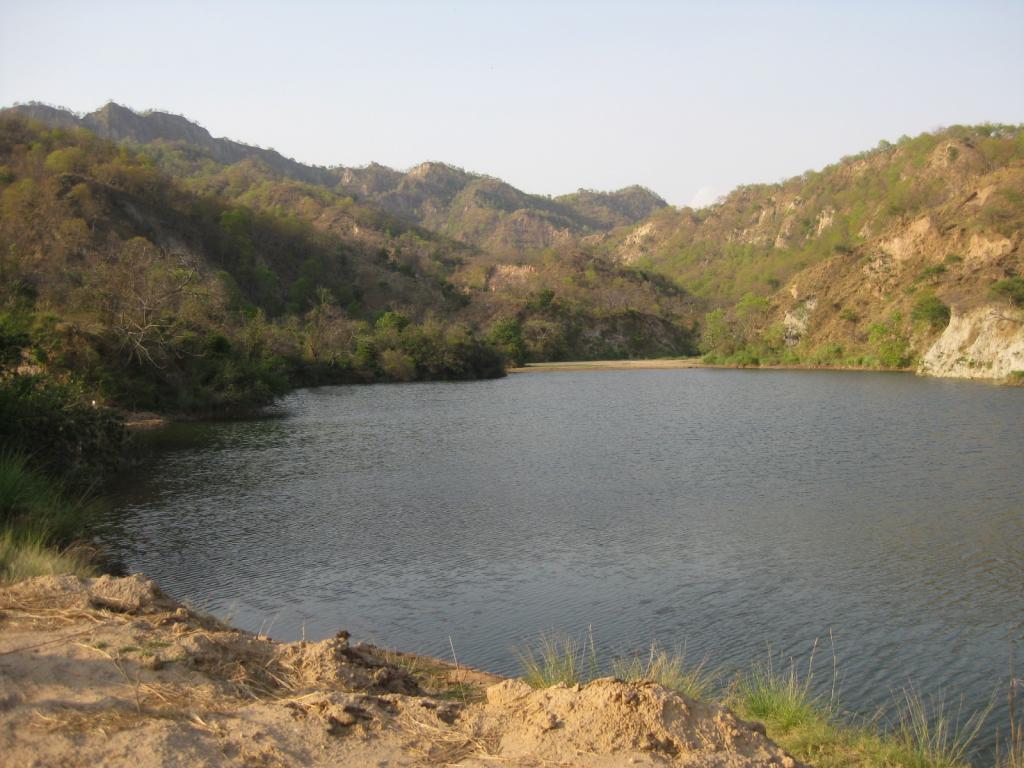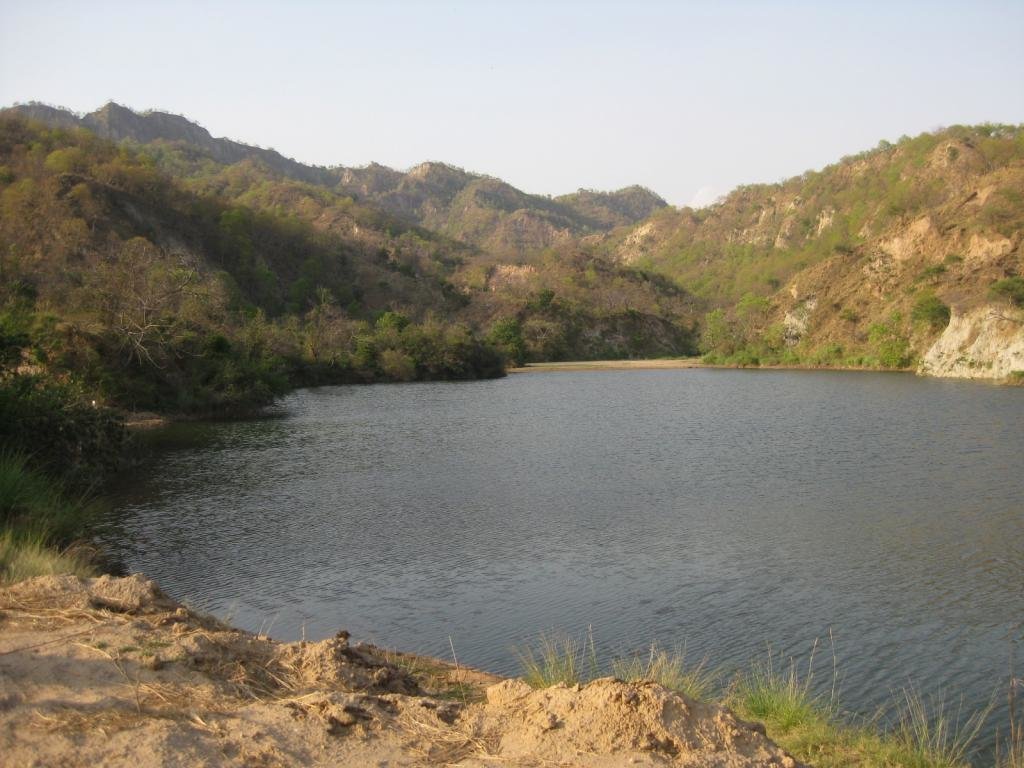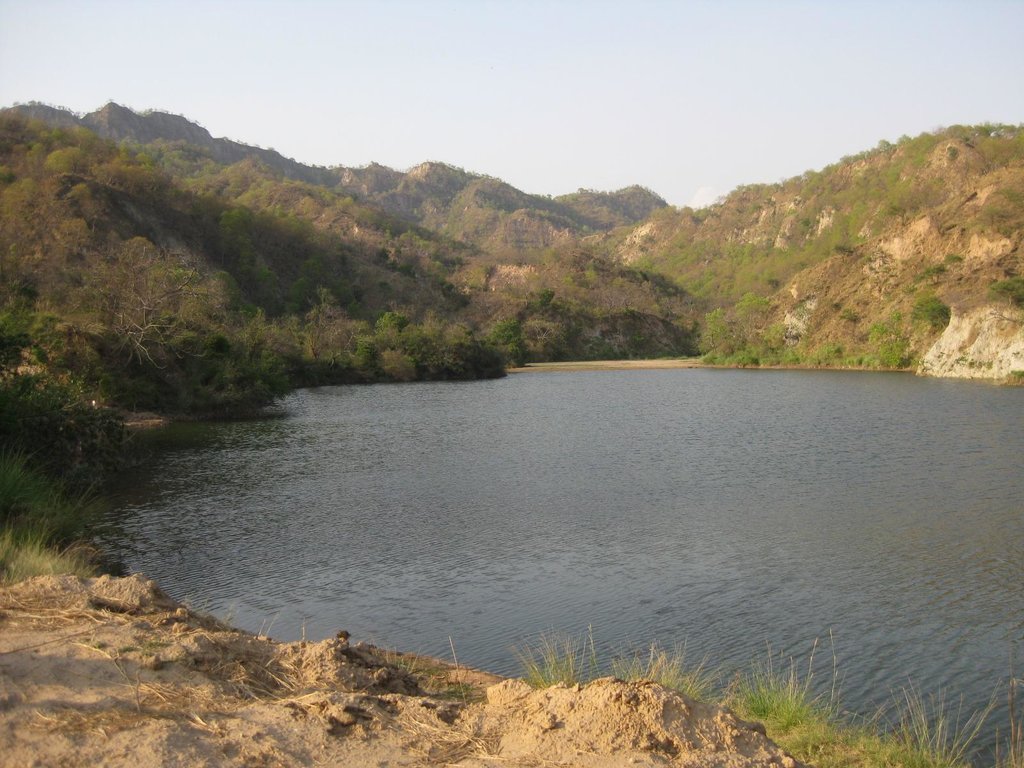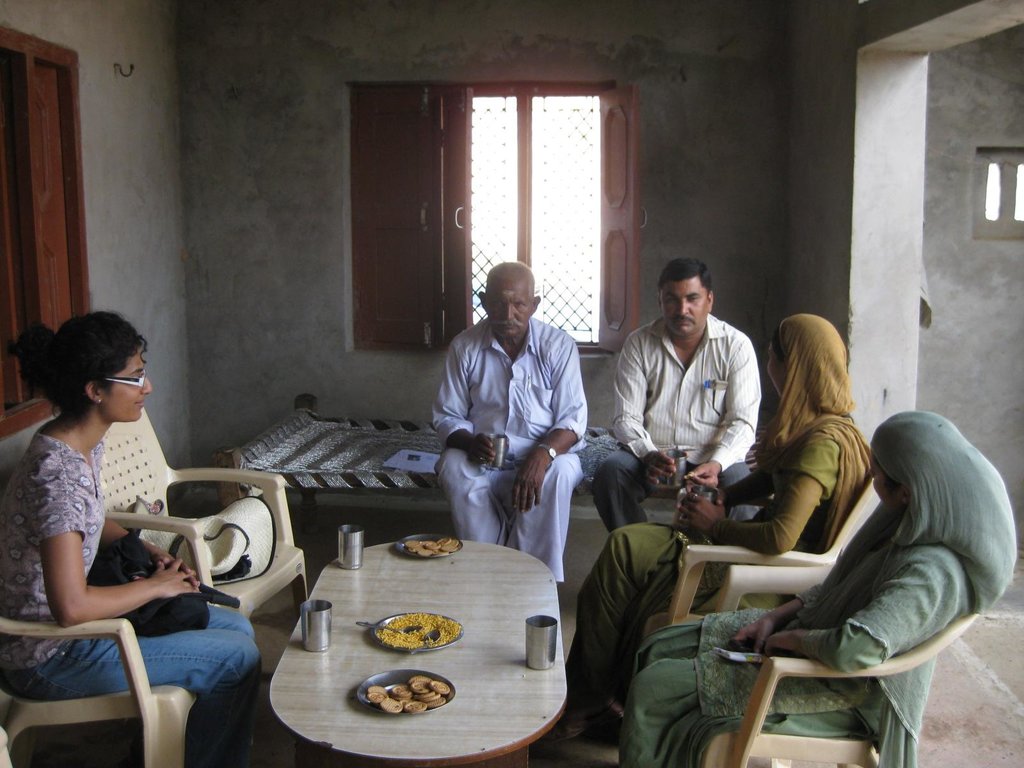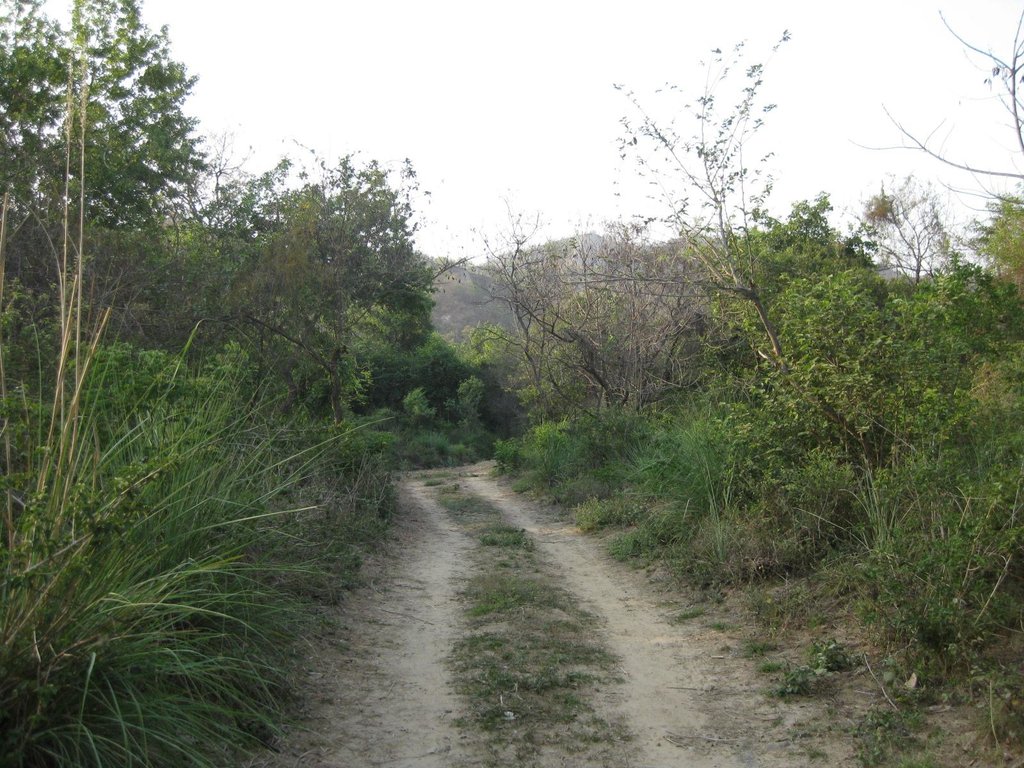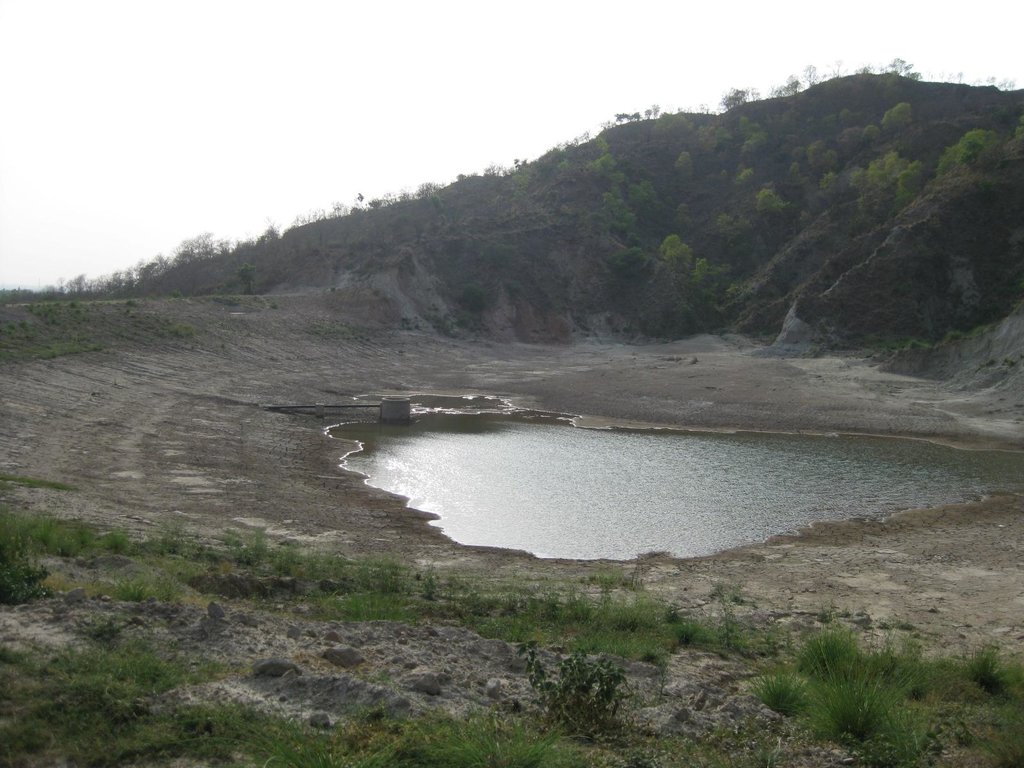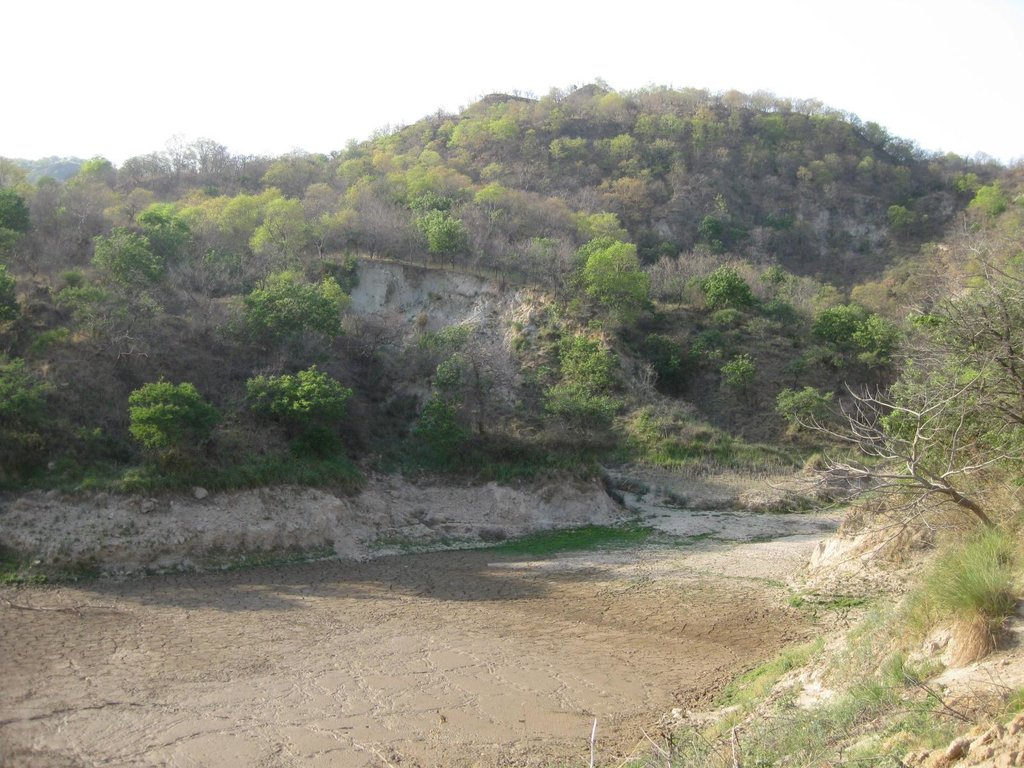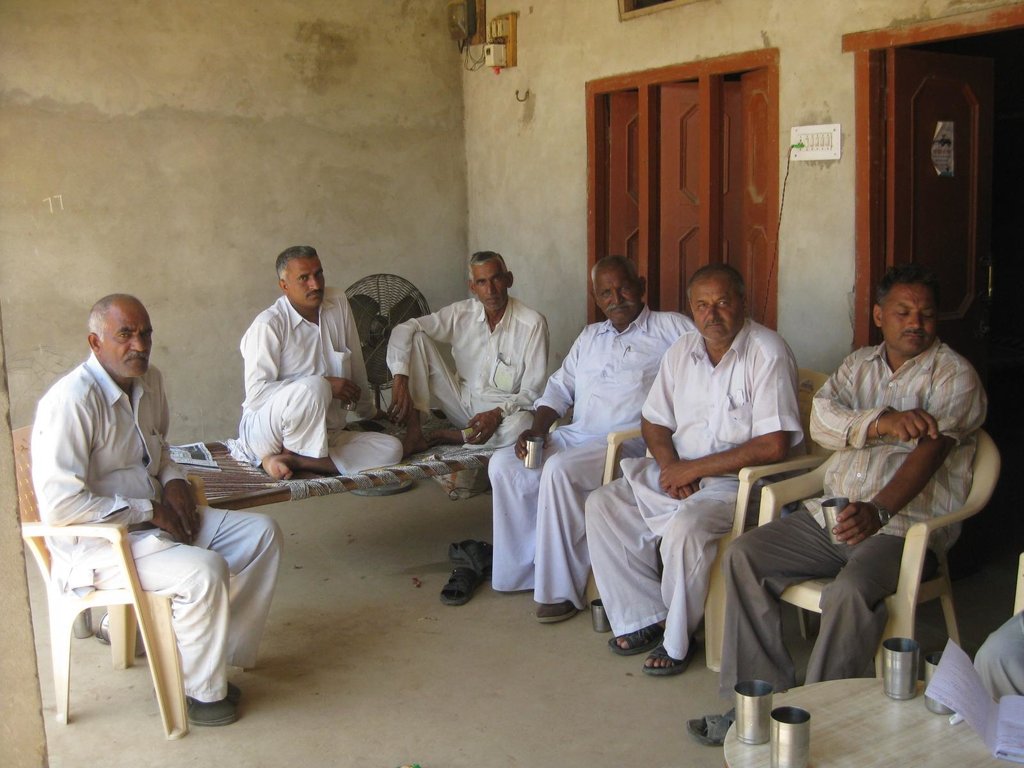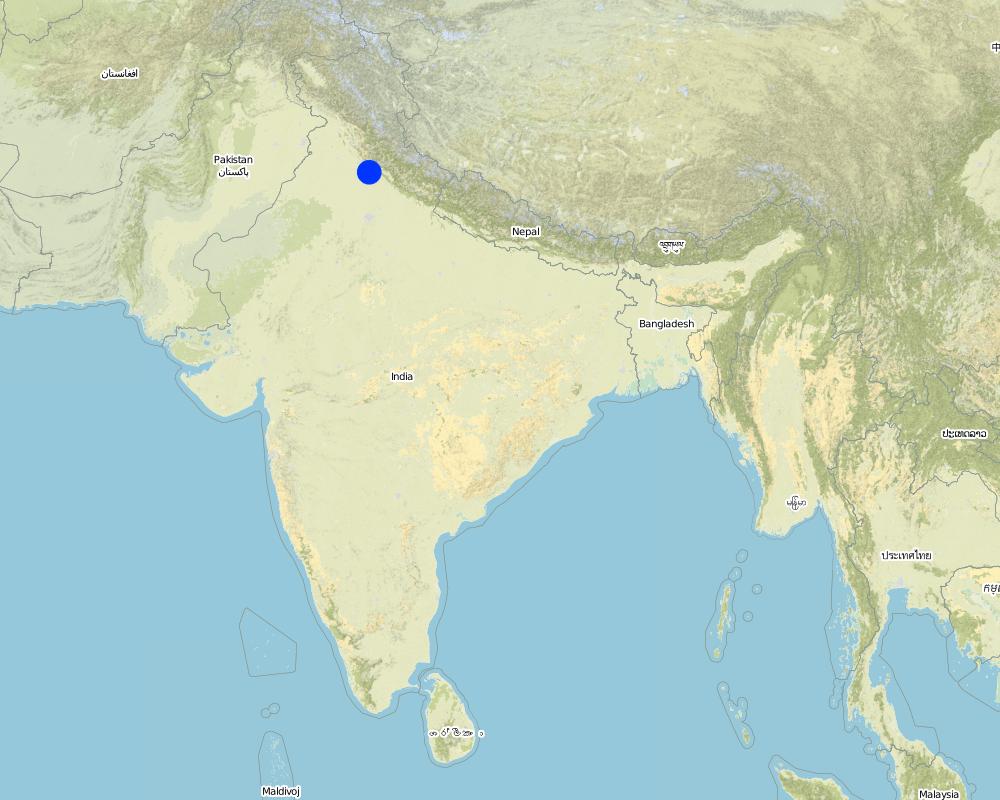Joint forest management [India]
- Creation:
- Update:
- Compiler: Sumana Datta
- Editor: –
- Reviewer: Fabian Ottiger
joint forest management (Revisiting the former QA IND14)
approaches_2452 - India
View sections
Expand all Collapse all1. General information
1.2 Contact details of resource persons and institutions involved in the assessment and documentation of the Approach
SLM specialist:
Indukuri Sirisha
sirisha@teri.res.in
The Energy and Resource Institute (TERI)
Darbari Seth Block, India Habitat Center Lodhi Road, New Delhi 110 003,
India
SLM specialist:
Name of the institution(s) which facilitated the documentation/ evaluation of the Approach (if relevant)
VU University Amsterdam (VU University Amsterdam) - NetherlandsName of the institution(s) which facilitated the documentation/ evaluation of the Approach (if relevant)
Tata Energy Research Institute TERI (Tata Energy Research Institute TERI) - India1.3 Conditions regarding the use of data documented through WOCAT
The compiler and key resource person(s) accept the conditions regarding the use of data documented through WOCAT:
Yes
1.4 Reference(s) to Questionnaire(s) on SLM Technologies
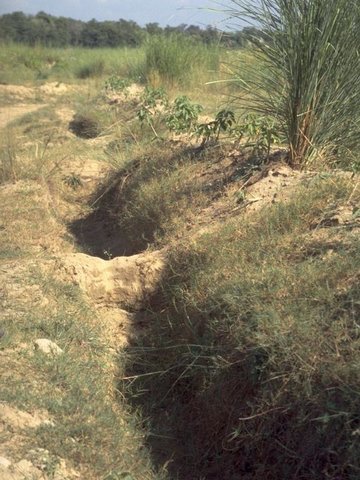
Forest catchment treatment [India]
Catchment treatment of degraded forest land including social fencing, infiltration trenches and enrichment planting with trees and grasses for production and dam protection.
- Compiler: Chetan Kumar
2. Description of the SLM Approach
2.1 Short description of the Approach
Joint forest management is a community based program developed in collaboration with the forest department for the protection and management of local forests while providing incentives to the local communities with political and institutional support from the state.
2.2 Detailed description of the Approach
Detailed description of the Approach:
Aims / objectives: Joint forest management (JFM) in India emerged in the 1980s from community initiatives in forest protection. It is an approach that leads to environmental and production benefits through community co-operation in natural resource management. State-supported JFM in Haryana began in 1990 when the Haryana State Government signed an agreement with The Energy and Resources Institute (formerly TERI: Tata Energy Research Institute) - underpinned by financial support from the Ford Foundation - to help establish Hill Resource Management Societies (HRMS). These state sponsored, village level societies are key to the success of JFM, and their links to the State Forest Department are crucial.
Methods: The founding principles of HRMS include appropriate social composition, accountability and conflict resolution and are open to all members of the village communities regardless of gender or caste. Management committees are elected, and each must include at least two women. The HRMS oversee forest catchment management activities by villagers, arrange distribution of irrigation water (where applicable) and liaise with the State Forest Department and TERI. Hill Resource Management Societies derive income from non-timber forest products - particularly from sales of bhabbar grass (used for rope making) - and from water use charges. This income is managed by the HRMS and used for village development and community welfare. Where there is a water harvesting dam all members have the right to claim an equal share of the water, irrespective of whether they have land to irrigate or not.
Stages of implementation: The JFM program was implemented in Thaska with assistance from TERI from 1990 until 2003 where 342 ha of state owned forests were managed. In 2003 TERI, the implementing NGO formally pulled out of Thaska and from 2004 to 2007 there was a gap where JFM continued in the village on its own. In 2007, TERI in partnership with IUCN implemented ‘The Livelihoods and Landscape Strategy’ (LLS) in four villages, including Thaska.
Role of stakeholders: The stakeholders are the villagers, the Haryana forest department and the participating NGOs, in this case TERI. Within villages where JFM is implemented, all adult members (men and women) are eligible for membership within the HRMS. In India, and particularly Haryana, one of the major factors inhibiting women’s participation in JFM activities is the traditional role of women society and attitudes towards them. Women are often marginalized in villages such as Thaska. Thanks to the efforts of the forest department and TERI over the last two decades, the women are more empowered today and attend the HRMS meetings. JFM benefits people with land the most and landless people tend to lose out on such schemes. There is a provision for equal share of water to landless in Thaska. Even though rules for inclusion of water share for landless exist, these are currently not in practice.
2.3 Photos of the Approach
2.5 Country/ region/ locations where the Approach has been applied
Country:
India
Region/ State/ Province:
Haryana
Further specification of location:
Sadhora range in Yamunanagar district
Map
×2.6 Dates of initiation and termination of the Approach
Indicate year of initiation:
1990
2.7 Type of Approach
- project/ programme based
2.8 Main aims/ objectives of the Approach
The Approach focused mainly on other activities than SLM (Water harvesting, provision of NTFPs to boost incomes. Mainly related to economic activities.)
Develop democratic and powerful Hill Resource Management Societies. - protect the forest land, by means of local participatory governance, and thereby improve the flow of forest products. - boost agricultural productivity through irrigation in village fields from dams in the protected catchments
The SLM Approach addressed the following problems: The main basic problem to be confronted was lack of control over the degradation of forest in the Shivalik Hills which was leading to erosion and siltation of water bodies and a lack of forest products/grazing. - There was no community organization established to address these issues on land that was handed over to the village for management by the Forest Department. Clear felling for agriculture, increasing grazing pressure from large herds of cattle coupled with forest fires and reckless felling replaced the dense forests of Shivaliks by bare hills with thorny bushes. The result was severe erosion on the hills (700T7ha/year) causing serious siltation in lakes/rivers and also affecting agricultural productivity, the primary source of livelihood of the area.
2.9 Conditions enabling or hindering implementation of the Technology/ Technologies applied under the Approach
social/ cultural/ religious norms and values
- hindering
- Exclusion of landless - Participation of women low - Lack of local institution for natural resource management.
Treatment through the SLM Approach: - Provision of water sharing to all members of the HRMS, including landless - Awareness raising activities conducted for women. Setting up of women’s self help groups for their empowerment - Set up Hill Resource Management Societies.
availability/ access to financial resources and services
- hindering
Inadequate budget from Forest Department for implementation.
Treatment through the SLM Approach: Water charges help to provide finance - but the State Government should assist more.
legal framework (land tenure, land and water use rights)
- enabling
The existing land ownership, land use rights / water rights greatly helped the approach implementation: The ownership of the land rests with the state but equal tenure rights of the forest, forest produce, and water to all HRMS members has greatly benefited these societies. Land use rights hinder the approach for the people who are not a part of / excluded from the HRMS.
knowledge about SLM, access to technical support
- hindering
Inadequate appreciation/understanding of integrated soil and water conservation/production approach within Forest Department.
Treatment through the SLM Approach: Build awareness in Forest Department.
3. Participation and roles of stakeholders involved
3.1 Stakeholders involved in the Approach and their roles
- local land users/ local communities
HRMS members
All adult members of the village can participate in the HRMS. Women empowerment is an important aspect of the forest policy in Haryana to wean the rural communities of the natural resources. To achieve that the HFD and TERI have set up several women’s SHGs across the region, including three in Thaska. There are differences between the participation of men and women mainly due to the social structure and the ethos of the area. Even though 2 women are mandated to be on the HRMS executive body and 1 woman per household can be a member, their participation is low and women are not always present in the HRMS meetings. Over the last ten years their participation has increased although their presence is mostly passive. They do not feel comfortable voicing their opinions in meetings. They participate actively in SHG meetings. This village/ area has members belonging to minority groups belonging to scheduled castes (SC), as well as religious minorities (Muslim Gujjars). Initially, as each family was eligible for the participation in the HRMS these disadvantaged groups benefitted greatly. However, instances where minorities are excluded are still present indicating that there is room for improvement.
- SLM specialists/ agricultural advisers
TERI has been involved in the JFM program since 1990 and was responsible for setting up the HRMS in Thaska.
- NGO
CSWCRTI, TERI
- local government
Forest officers and forest guards of the corresponding Block Office or Range Office.
- national government (planners, decision-makers)
Haryana forest department
- international organization
Ford Foundation (no longer involved); IUCN (involved via the LLS program, discussed in section 2.1.1.2)
If several stakeholders were involved, indicate lead agency:
Where: TERI – The Energy and Resource Institute; CSWCRTI - Central Soil Water Conservation Research and Training Institute, Chandigarh Within Haryana, JFM was initiated by the CSWCRTI in the 1970s in the village of Sukhomajri. This project was then handed over to the Haryana forest department (HFD). The HFD involved TERI in the implementation of JFM across Haryana in 1990 following the national
3.2 Involvement of local land users/ local communities in the different phases of the Approach
| Involvement of local land users/ local communities | Specify who was involved and describe activities | |
|---|---|---|
| initiation/ motivation | passive | Land users participated in awareness raising campaigns and public meetings |
| planning | passive | Land users were consulted and provided information for baseline and feasibility studies, and wealth ranking; Various participatory (PRA) tools like FGDs, survey, pair wise ranking / scoring were used |
| implementation | interactive | Land users responsible for most implementation activities, including provision of labor; Land users were the main agents and TERI played a facilitator role. |
| monitoring/ evaluation | passive | Data / observations for recording changes collected from the land users directly. |
| Research | passive | Studies carried out using various participatory (PRA) tools like FGDs, survey, pair wise ranking / scoring by TERI with people participation. |
3.3 Flow chart (if available)
Description:
Flow chart identifying the various stakeholders at different levels for the LLS program
Author:
Fatema Baheranwala, Sirisha Indukuri, Sumana Datta
3.4 Decision-making on the selection of SLM Technology/ Technologies
Specify who decided on the selection of the Technology/ Technologies to be implemented:
- mainly SLM specialists, following consultation with land users
Explain:
Decisions on the method of implementing the SLM Technology were made by mainly by SLM specialists with consultation of land users
4. Technical support, capacity building, and knowledge management
4.1 Capacity building/ training
Was training provided to land users/ other stakeholders?
Yes
Specify who was trained:
- land users
If relevant, specify gender, age, status, ethnicity, etc.
Women self help groups (SHGs)
Form of training:
- public meetings
- courses
Subjects covered:
SHGs: Capacity building, saving money, and generating additional income. HRMS – awareness raising of existing services and training regarding daily functioning of HRMS, record maintenance, etc., TERI was involved in training the forest department under the JFM program, but those activities were stopped after 2004.
4.2 Advisory service
Do land users have access to an advisory service?
Yes
Describe/ comments:
Name of method used for advisory service: Provide support to the HRMS and the SHG; Key elements: Improve day to day functioning to improve transparency and increase participation. , Support record maintenance.
Advisory service is inadequate to ensure the continuation of land conservation activities; Land users are aware of their responsibilities to maintain and repair existing SWC structures but need more training and support from the forest department or NGOs in order to carry out these activities.
4.3 Institution strengthening (organizational development)
Have institutions been established or strengthened through the Approach?
- yes, greatly
Specify the level(s) at which institutions have been strengthened or established:
- local
Specify type of support:
- capacity building/ training
Give further details:
The local institutions have been supported through training and capacity building over the last two decades.
4.4 Monitoring and evaluation
Is monitoring and evaluation part of the Approach?
Yes
Comments:
bio-physical aspects were ad hoc monitored by project staff through measurements
technical aspects were regular monitored by project staff through measurements
socio-cultural aspects were regular monitored by project staff through observations
economic / production aspects were regular monitored by project staff through observations
area treated aspects were ad hoc monitored by project staff through observations
no. of land users involved aspects were regular monitored by project staff through observations
management of Approach aspects were regular monitored by project staff through observations
There were several changes in the Approach as a result of monitoring and evaluation: There were several changes in the approach. Internal reviews are carried out every one or two years: there have been several changes proposed and carried out as a result. These changes were in aspects of sharing water irrigation, and in methods of utilizing income derived from forest products - especially bhabbar grass (Eulaliopsis binata).
4.5 Research
Was research part of the Approach?
Yes
Specify topics:
- sociology
- economics / marketing
- ecology
- technology
Give further details and indicate who did the research:
Research was carried out by TERI covering various aspects of the JFM program, the institutional set up, NTFP value chains, wealth ranking of the villages, etc., As LLS was an action research project, it involved a considerable amount of on-farm research. Some results were made available through TERI and by the Haryana forest department (HFD).
Research was carried out on-farm
5. Financing and external material support
5.1 Annual budget for the SLM component of the Approach
Comments (e.g. main sources of funding/ major donors):
Approach costs were met by the following donors: government (The government contributes in constructing SWC structures in the JFM forests. Maintenance and repair); international non-government (Ford foundation is no longer active in JFM and JFM does not receive any external funding in Haryana ); local community / land user(s) (Carry out maintenance and repair of the water harvesting and soil and water conservation structures.)
5.2 Financial/ material support provided to land users
Did land users receive financial/ material support for implementing the Technology/ Technologies?
Yes
5.3 Subsidies for specific inputs (including labour)
- equipment
| Specify which inputs were subsidised | To which extent | Specify subsidies |
|---|---|---|
| machinery | fully financed | bulldozers are used to construct dams |
- agricultural
| Specify which inputs were subsidised | To which extent | Specify subsidies |
|---|---|---|
| seeds | partly financed | |
- infrastructure
| Specify which inputs were subsidised | To which extent | Specify subsidies |
|---|---|---|
| Buildings | fully financed | |
If labour by land users was a substantial input, was it:
- voluntary
Comments:
Construction of dams and other soil conservation structures are undertaken by the local communities. Dam maintenance is carried out by the local community using the HRMS funds for the most part. For establishment of dams and infrastructure, labor is rewarded (up to 95%) with cash wages.
5.4 Credit
Was credit provided under the Approach for SLM activities?
Yes
Specify conditions (interest rate, payback, etc.):
Interest rate charged: 2.0%; repayment conditions: SHG Women. The money contributed and saved by the SHG women is used for inter-loaning amongst themselves with an interest rate of 2% per month..
Interest was lower than market rate.
Specify credit receivers:
Women from the self help groups
6. Impact analysis and concluding statements
6.1 Impacts of the Approach
Did the Approach help land users to implement and maintain SLM Technologies?
- No
- Yes, little
- Yes, moderately
- Yes, greatly
The creation of HRMS led to economic, ecological and social improvements. Forest canopy was restored, and tree density increased. Soil erosion reduced and water management improved. Provision of water boosted agricultural productivity provision of grasses mainly in the first decade enhanced incomes.
Did the Approach empower socially and economically disadvantaged groups?
- No
- Yes, little
- Yes, moderately
- Yes, greatly
For the marginalized landless communities the provision of NTFPs improved their incomes. Furthermore, participation in the HRMS meant equal rights that empowered these groups. Yet, poverty persists.
Did the Approach improve issues of land tenure/ user rights that hindered implementation of SLM Technologies?
- No
- Yes, little
- Yes, moderately
- Yes, greatly
Typical case of common pool resource problems: The people within these villages were over-utilizing their resources and thus giving access rights to land and water ensured that people felt a sense of ownership and derived benefits from these resources, which motivated them to protect them.
Did other land users / projects adopt the Approach?
- No
- Yes, little
- Yes, moderately
- Yes, greatly
The original experiment in Sukhomajri has been replicated in 60 other villages within Ambala and Yamunagar Districts - and further afield in Haryana and India generally. The women in Thaska were eager to form SHGs after observing other SHGs in practice.
Did the Approach lead to improved livelihoods / human well-being?
- No
- Yes, little
- Yes, moderately
- Yes, greatly
Over the past decade incentives remained constant. Thus, the incentives haven’t kept up with the changing economic trends within the country and people’s aspirations for their well-being.
Did the Approach help to alleviate poverty?
- No
- Yes, little
- Yes, moderately
- Yes, greatly
The approach mainly benefited people with land in terms of poverty alleviation. JFM can improve livelihoods but cannot alleviate poverty. Forests cannot satisfy the growing demands of these people.
6.2 Main motivation of land users to implement SLM
- increased profit(ability), improved cost-benefit-ratio
Indirectly through agriculture
- well-being and livelihoods improvement
Through agriculture and the provision of NTFPs
6.3 Sustainability of Approach activities
Can the land users sustain what has been implemented through the Approach (without external support)?
- uncertain
If no or uncertain, specify and comment:
Over the last decade the HRMS remained static, which resulted in a consequent weakening of the institution and a general loss of interest in the program. This could partially be due to the creation of other parallel institutions operating in the same village with no integration. This resulted in a duplication of efforts and and created tensions regarding rights and authority. Also, funding greatly reduced. Lack of funds have impeded the timely maintenance and repair of the technical structures
6.4 Strengths/ advantages of the Approach
| Strengths/ advantages/ opportunities in the land user’s view |
|---|
| The condition of managed forests has improved. Forests have regenerated and forest cover and tree density have improved. (How to sustain/ enhance this strength: Ensure that people are motivated to protect and manage their forests. ) |
| The JFM program brought the forest department and the local communities closer. The FD and the local communities have learnt to work together and in many areas have a congenial working relationship. (How to sustain/ enhance this strength: Continue existing activities) |
| Strengths/ advantages/ opportunities in the compiler’s or other key resource person’s view |
|---|
| Direct and indirect benefits of JFM through agriculture and livestock rearing, greatly improved income of participating families. (How to sustain/ enhance this strength: Better access to markets and training of value addition on NTFPs required.) |
| The institutional set up of JFM is strong in several villages. The HRMS function in a democratic manner and people are aware of their rights and responsibilities. For the participating members, the benefit sharing was considered fair and equitable. (How to sustain/ enhance this strength: Continue to build capacity of these institutions. Guide and support the HRMS to ensure that they continue to grow and function in a democratic manner. ) |
| JFM had a tangible impact on tenure rights. The creation of HRMS established a healthy relationship between the FD and the local communities. (How to sustain/ enhance this strength: Make the JFM policy flexible – where JFM communities are performing well give them greater responsibilities and rights.) |
| Women and minorities are more empowered today, through schemes such as the creation of SHGs and participation in HRMS meetings. The creation of SHGs has given women access to micro credit. (How to sustain/ enhance this strength: Continue to create awareness among women.) |
6.5 Weaknesses/ disadvantages of the Approach and ways of overcoming them
| Weaknesses/ disadvantages/ risks in the land user’s view | How can they be overcome? |
|---|---|
| Incentives for participation are not sufficient. Local communities are concerned that the younger generation will continue these activities due to the dearth of incentives. | Land users in different villages have different needs from their forests. JFM policy needs to be reformed. Policy should be flexible to be able to tailor it to the specific needs of the land users to provide them with the appropriate incentives to ensure participation. |
| Women lack training/ tools to develop skills to engage in income generation activities | Conduct training sessions and distribute tools to women to allow them to engage in income generation activities. |
| Due to the improvement in forest quality the number of wild animals in these forests has increased. Recently animals are entering the agricultural fields and destroying the crops. | The villagers would like to fence the forest area, however carrying out enrichment planting in the forest by planting edible plants and shrubs and either constructing trenches around the forest or planting vegetative barriers that can reduce the movement of the animals to the village lands is recommended. |
| Weaknesses/ disadvantages/ risks in the compiler’s or other key resource person’s view | How can they be overcome? |
|---|---|
| Huge gaps in market access and value addition for NTFPs. | Possible solutions included the removal of middle men, establishing links to the markets and training them for value addition of their products to boost their incomes. |
| Biodiversity of the forests is decreasing due to the spread of an invasive species, Lantana camara, that threatens to crowd out valuable species and is susceptible to forest fires. | Train land users in culling of Lantana camara as well as making NTFPs using the shrub. Engage in forest maintenance and clearance of paths to avoid forest fires. |
| Malfunctioning dams have instigated the proliferation of tube wells across the village, which threatens to lower the water table. | Ensure that sufficient funds are available to carry out regular dam maintenance and repair. Regulate tube wells by including permission for setting up tube wells in the joint management agreement. |
| Multiple programs that set up parallel institutions for resource management means less attention is paid to existing institutions and results in the inefficient utilization of resources. | There is a need to synergize and focus on the goals of these programs rather than the means of implementation. |
| Funding for JFM has drastically reduced. | There is an opportunity to merge JFM activities with regional, national and international programs to channel funds through JFM committees for forest related activities. |
| Participation of women is still passive. | Continue to create awareness among women. |
7. References and links
7.1 Methods/ sources of information
- field visits, field surveys
- interviews with land users
7.2 References to available publications
Title, author, year, ISBN:
IBRAD (2006). Study on effectiveness and functioning of joint forest management committees in India. A project of National Afforestation and Eco-development Board, Ministry of Environment and Forests, Government of India. Conducted by Indian Institute of Bio-Social Research & Development (IBRAD), Kolkata, India
Title, author, year, ISBN:
ISFR (2009). India State of Forest Report 2009 – Haryana. Forest Survey of India. Ministry of Environment and Forests, Government of India Retrieved from <http://www.fsi.nic.in/sfr_2009/haryana.pdf> on June 21 2011
Title, author, year, ISBN:
Kanetkar, R.S., Varalakshmi, V. (1994). Women in Godam - Haryana: A gender and caste based study on conservation of forest resources. Joint forest management series no. 13. Haryana forest department and Tata Energy Research Institute (TERI), New Delhi
Title, author, year, ISBN:
Kaul, O.N., Dwivedi, B.N., Shah, V. (1995 a). Ecological revival of Haryana Siwaliks through community participation. Joint Forest Management series no. 17. Haryana forest department and Tata Energy Research Institute (TERI), New Delhi
Links and modules
Expand all Collapse allLinks

Forest catchment treatment [India]
Catchment treatment of degraded forest land including social fencing, infiltration trenches and enrichment planting with trees and grasses for production and dam protection.
- Compiler: Chetan Kumar
Modules
No modules


